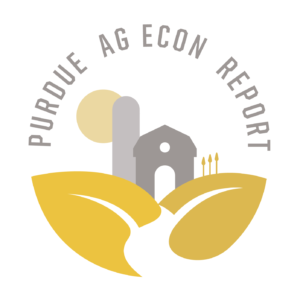Why Farmland Values will Drop in 2016?
December 13, 2015
PAER-2015-21
Craig Dobbins, Professor of Agricultural Economics
Low or negative crop returns are exerting a negative influence on farmland values, but low interest rates, so far, have been a source of support. However, the Federal Reserve Bank has been positioning to raise interest rates and the odds seem quite high for them to start soon. If rates do move higher, this will be one more economic indicator that would cause weaker farmland values.
To show how falling returns and rising interest rates could impact land values, we use the simple capitalization model V=r/((i-g)) where V is the per acre value of farmland, r is the annual per acre net return to farmland, i is the interest rate, and g is the growth rate in the annual net return to farmland.
This simple model indicates a 10% decline in the net return to land will result in a 10% decline in farmland values if interest rates and the growth rate are unchanged.
To date, lower expected returns have likely been the major force weakening the farmland market. While there are still some reports of strong farmland prices, most broad surveys of farmland values in the Midwest consistently indicate that farmland values are declining. Because of different opinions in the marketplace, market values seldom adjust as quickly, or as precisely as the models forecast.
Purdue’s Indiana Farmland Value Survey from June 2015 indicates that average Indiana cash rent for the 2015 crops was $229 per acre. If we use .06 for interest rates and .03 for the annual growth rate (historical average), this model values average Indiana farmland at $7,633 per acre ($229/ (.06-.03)). However, if the interest rate were to rise by 10% to .066, then the model would suggest farmland would drop to $6,361 per acre ($229/ (.066-.03)). The 10% rise in interest rates, drops land values by 17%. This example illustrates that interest rate increases are likely to have a larger downward impact on farmland values than declines in expected net income.
More importantly, land values would be expected to fall more quickly in an economic environment of low returns in combination with rising interest rates. This appears to be the economic environment that agriculture will face in 2016.
Since there is a limited supply of farmland on the market, the downward adjustment process will continue to be slow. On a statewide basis, I expect farmland values to drop 5%-12% in 2016. Declines toward the top end of this range are more likely if interest rates begin to climb by early in 2016.
